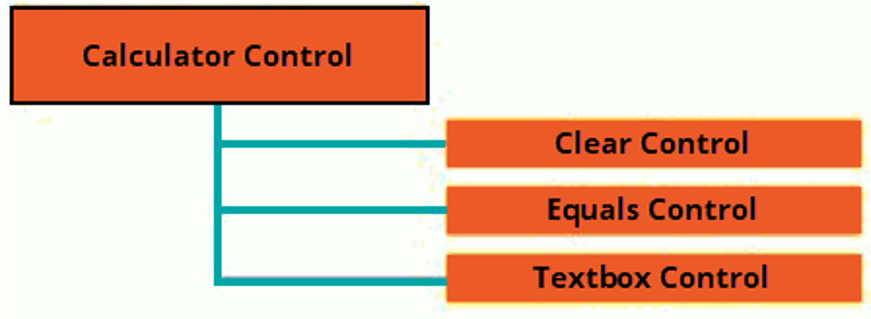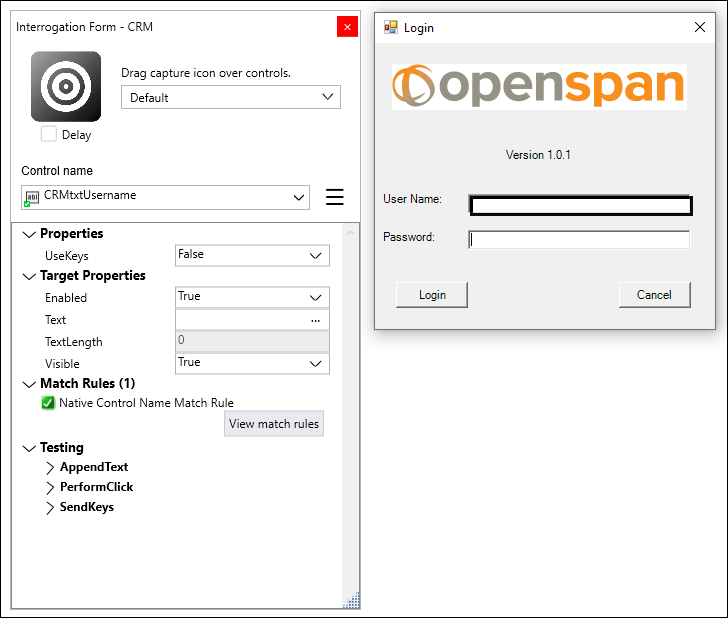
Elements created during interrogation
Controls
A control is a representation of an application object created by interrogating the object. Pega Robot Studio organizes controls in a hierarchy.
For example, interrogating the Clear and Equals buttons and the Results text box on a Calculator application results in the following hierarchy:
The hierarchy is also represented in the classes associated with the control. For example, a text box interrogated in a Windows application is in the OpenSpan.Adapters.Controls.Textbox class. The text box control inherits all the relevant properties, methods, and events associated with the Textbox class and its base classes.
A control performs the following functions:
- Saves the rules that are necessary to accurately identify the object for the next time the application runs
- Acts as a proxy for the object so that the object can be used in automations even when the user object has not been created within the target application
- Provides a consistent interface for the object regardless of the underlying application technology
Targets
A target is a Pega Robot Studio object that corresponds directly with an application object.
A control represents the virtual object that does not change with different instances of the application. A target represents the actual application object that exists within the application at any given moment.
Targets are created and destroyed when application objects are created and destroyed. Targets are platform-specific. They encapsulate the necessary logic to automate and monitor application objects. As a result, the text box control can interact with any target that implements the text box interface, such as a Windows text box target, a Java text box target, or an HTML text box target.
In the following example, the CRMtxtUserName control in the Interrogation Form highlights the corresponding target User Name in the CRM application.
Factories
Factories enable communication between application targets and their platforms.
During interrogation, Pega Robot Studio automatically adds the required factories. The factories indicate successful interaction between Pega Robot Studio and the application platform.
In the following example, the interrogation of CRM application results in the creation of two Factory elements.
Translators
A translator is an application object that, like factories, communicates between the application targets and their platforms. A translator lets Pega Robot Studio automate and receive events from an application object. Targets communicate directly with translators. Pega Robot Studio injects translators into a target application and attaches translators to the appropriate application object.
Translators do not require any modifications or recompilation of the target application. Translators are in the same language as objects with which they interact.
This Topic is available in the following Module:
If you are having problems with your training, please review the Pega Academy Support FAQs.
Want to help us improve this content?


